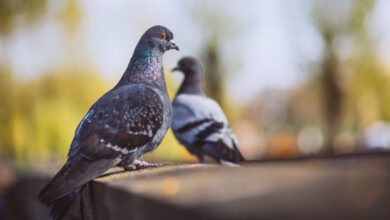Unleashing Creativity: The Magic of Crayon Art

Introduction
For many of us, our first foray into the world of art began with a simple crayon. The very word “craiyon” (a playful variation on “crayon”) evokes feelings of nostalgia, vivid memories of childhood scribbles, and the joy of creating without inhibitions. However, the potential of crayons extends far beyond elementary school art rooms. In this article, we will delve deep into the magical realm of crayon art, exploring its history, techniques, and how it remains an essential tool for both budding and established artists.
The History of the Crayon
Crayons, known for their vibrant colors and ease of use, have a rich history. The word “crayon” originates from the French word “craie,” meaning chalk, and the Latin word “creta,” meaning clay. In ancient times, artists used natural pigments mixed with different binders, like beeswax or oil, to create artwork. It wasn’t until the 19th century, however, that crayons in their modern form came into existence, providing artists and children with an accessible medium to express their creativity.
Techniques in Crayon Art
Crayon art is far from being one-dimensional. Several techniques have evolved over the years, allowing artists to harness the medium’s full potential.
Melting: One of the most popular techniques is melting crayons to produce a vibrant, dripping effect. Artists attach crayons to a canvas and apply heat, resulting in a burst of molten colors that cascade downwards, creating abstract and mesmerizing art pieces.
Layering: By applying one color over another, artists can achieve depth and texture, similar to oil painting. This technique requires patience and a keen understanding of color combinations.
Scratching: Drawing with crayons and then using a pointed tool to scratch the surface can produce intricate designs and reveal underlying colors, adding dynamism to the artwork.
The Unconventional Appeal of Crayon Art
Why would an artist choose crayons over other mediums? Crayons, in their simplicity, offer a unique texture and vibrancy not easily replicated by other tools. Their wax-based composition allows for rich, creamy applications of color that can be easily blended or layered. Additionally, crayons are not bound by age; they appeal to both children exploring their initial strokes and seasoned artists looking for a different medium.
Furthermore, the sheer variety of crayon colors available today pushes the boundaries of creativity. With metallics, neons, and even glow-in-the-dark options, the sky is genuinely the limit.
The Resurgence of Crayon Art in Contemporary Culture
In recent years, we have witnessed a revival in the appreciation of crayon art. Contemporary artists are increasingly experimenting with crayons, pushing their conventional boundaries. This renaissance has elevated crayon art from child’s play to gallery-worthy exhibits. Social media platforms, like Instagram and Pinterest, have also played a pivotal role in showcasing and celebrating the versatility of crayon art, inspiring many to revisit this once-underappreciated medium.
Crayons vs. Other Art Mediums
When comparing crayons to other art mediums, such as paints or colored pencils, one quickly realizes the unique value crayons bring to the table. Unlike paints, crayons are mess-free, don’t require any drying time, and offer immediate, tactile feedback. They’re portable and don’t demand the use of brushes or solvents. Compared to colored pencils, crayons provide a bolder and creamier texture, making blending and layering a distinct experience. Their inherent simplicity is perhaps their greatest strength. Without the complexities that come with other mediums, artists can focus purely on expression and form.
Crayons in Education
The importance of crayons in educational settings can’t be understated. For young children, they serve as an introduction to colors, hand-eye coordination, and even the basics of grip and motor skills. Teachers often use crayons to help kids understand concepts outside of art, such as math and science, by drawing diagrams or having students participate in interactive activities. Moreover, crayons help children develop cognitive skills, improve concentration, and explore their emotions safely and constructively.
Crayons: Beyond Paper and Canvas
While paper and canvas are the traditional surfaces for crayon art, innovative artists and crafters are constantly pushing the envelope. Crayons can be used on wood, fabric, and even pottery. This versatility has led to a surge in DIY projects and home décor ideas that revolve around melted crayon designs. Imagine a piece of reclaimed wood adorned with a vibrant melted crayon sunset or a fabric tote bag with abstract crayon patterns. The possibilities are endless and limited only by one’s imagination.
The Environmental Impact and Sustainability of Crayons
Today’s conscious consumer is ever-aware of the environmental footprint of the products they use. Crayons, primarily made of paraffin wax, which is derived from petroleum, have drawn concerns over sustainability. However, the art industry has responded with innovations. There are now eco-friendly crayons available made from beeswax or soy, which are biodegradable and safe for the environment. Additionally, many initiatives and programs collect and recycle old, unused crayons, reducing waste and creating opportunities for sustainable art.
Conclusion
The magic of crayon art lies in its accessibility and the memories it invokes. While often dismissed as a child’s tool, crayons hold immense potential in the hands of an artist willing to experiment. The world of crayon art is expansive and limitless, from intricate landscapes and portraits to abstract wonders. As we continue to recognize and celebrate crayon art’s potential, we are reminded of art’s true essence: to express, evoke emotions, and transcend boundaries.
Also, Read The Following: gwalabet



